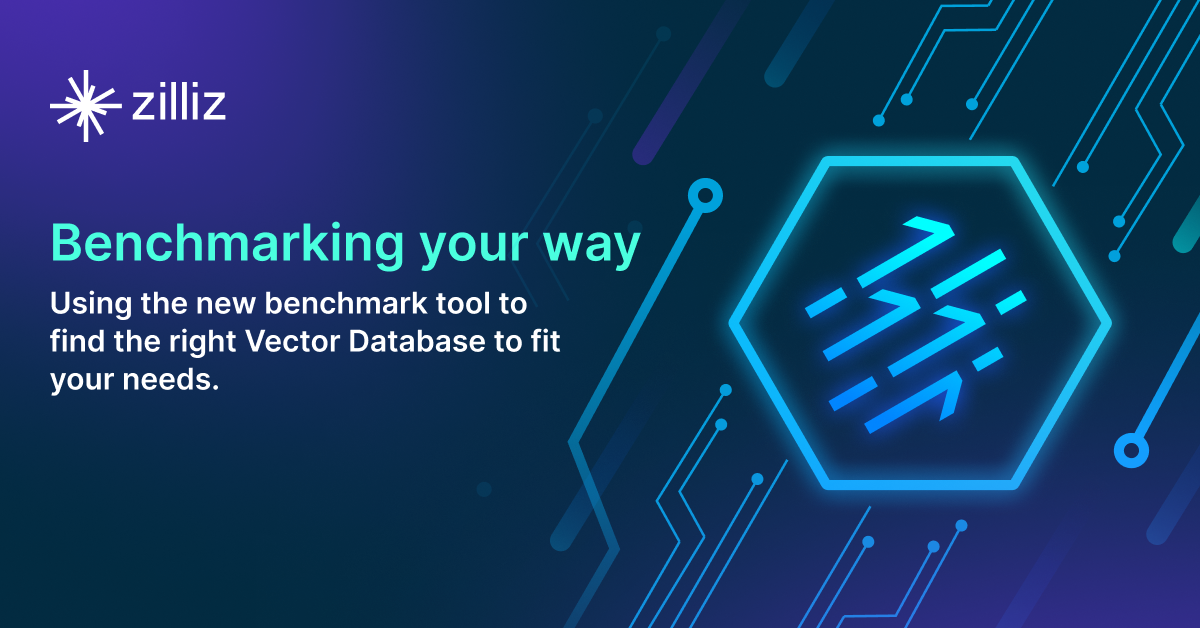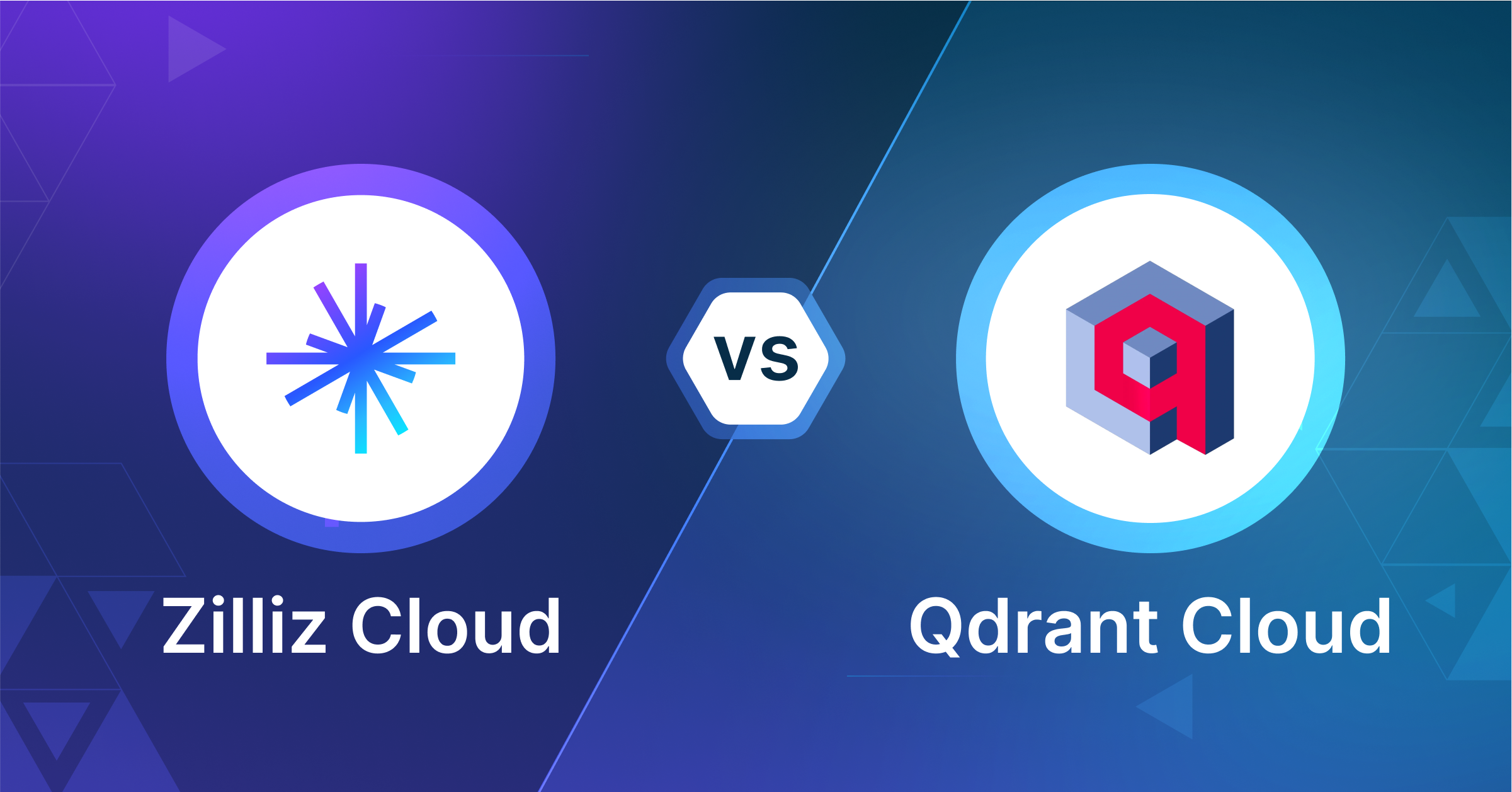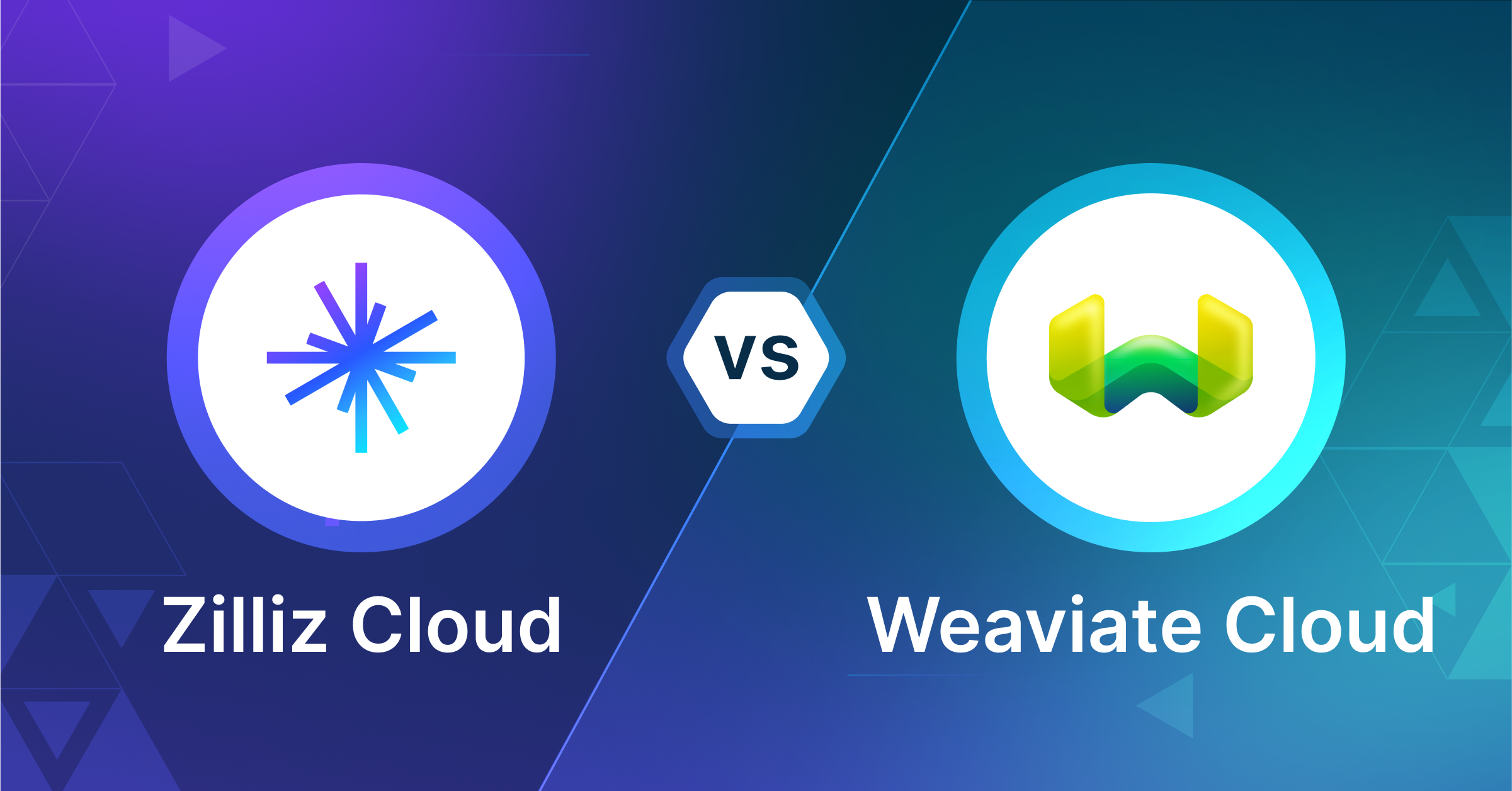Developing Custom Applications with Vector Databases
How Vector Database play a pivotal role in your custom application development
Read the entire series
- Introducing an Open Source Vector Database Benchmark Tool for Choosing the Ideal Vector Database for Your Project
- How to Choose A Vector Database: Elastic Cloud vs. Zilliz Cloud
- How to Choose a Vector Database: Qdrant Cloud vs. Zilliz Cloud
- How to Choose A Vector Database: Weaviate Cloud vs. Zilliz Cloud
- Benchmarking Vector Database Performance: Techniques and Insights
- Developing Custom Applications with Vector Databases
Crafting a custom application involves tailoring software solutions to meet your unique requirements and preferences, departing from generic off-the-shelf options. This approach ensures a fully personalized user experience, where every aspect—design, and functionality—is meticulously aligned with your specifications. With the proliferation of data in recent years, the personalization of these custom applications has taken center stage. Developers now harness various structured data, such as demographics, purchase intent, and sensor data, stored across relational databases, NoSQL databases, in-memory databases and time series databases.
However, with advancements in AI, particularly Neural Networks and large language models (LLMs), developers can now leverage another vast corpus of data for personalization—unstructured data derived from customer reviews, text documents, images, video, and audio. By converting these diverse data types into vector embeddings and conducting semantic similarity searches, developers can enhance the personalization capabilities of their applications. Vector databases play a pivotal role in this process, facilitating efficient storage, indexing, retrieval, and analysis of these embeddings.
Understanding Custom Applications
Custom applications are specialized software solutions tailored to an organization's unique needs, requirements, and goals, addressing specific challenges. These applications are typically exclusive to the organization or client commissioning them and serve multiple purposes, including automating business processes, analyzing data, and managing customer relationships. For example, customized customer portals streamline processes for managing customer relationships and interactions. Recommender systems on e-commerce sites can provide customers with recommendations based on the entire corpus of data on the customer to offer items that are enticing to the customers. Finally, Chatbots can answer customers' questions based on previous conversations and uploaded images, and they are not limited to customer transactional records.
Using unstructured data for these custom applications presents several challenges, such as the data's high sensitivity and its inability to be shared on the public Internet. The volume of this data is significant, requiring systems with high processing power to handle it. Finally, extracting the right insights and meaning from unstructured data poses a considerable challenge, as it often lacks predefined formats or structures, making it challenging to analyze and interpret effectively.
Advantages of Using Vector Databases in Custom Applications
The significance of custom applications escalates as a business expands and experiences a surge in data volume. In this context, choosing a robust database system for building custom apps becomes imperative for efficient data storage, indexing, retrieval, and analysis, all of which are critical for informed decision-making.
Traditional relational databases once dominated data management, especially for structured data with a predefined format. However, as the digital landscape evolves and integrates more deeply with artificial intelligence, vector databases have taken center stage in managing unstructured data, such as images, text, and videos. This data type now constitutes over 80% of newly generated information, underscoring the shift towards more flexible and advanced database solutions in the digital transformation era and AI integration.
Vector databases offer several key benefits for building custom applications, especially in handling large volumes of unstructured data and enabling advanced search and analysis capabilities. Here are the main advantages:
- Efficient Handling of Unstructured Data: Vector databases are crafted to manage unstructured data such as images, videos, audio, and text. They convert this data into numerical representations known as vector embeddings, making it easier to store, search, and analyze. Therefore, vector databases are particularly useful for custom applications with diverse data types.
- Advanced Search Capabilities: Vector databases allow for semantic similarity search through vector embeddings, meaning they can understand the context and meaning of the data, not just exact matches. This approach leads to more accurate and relevant search results, enhancing the user experience in custom applications.
- Horizontal Scalability: Vector databases like Milvus and Zilliz Cloud (the managed Milvus) are designed to scale efficiently with rapid data growth. For example, the open-source Milvus vector database can handle tens of billions of vector points without a significant drop in performance, making it suitable for custom applications that expect to scale up over time.
- Speed and Performance: Many purpose-built vector databases offer fast retrieval times for complex queries, which is crucial for applications requiring real-time data processing and analysis. This performance efficiency makes vector databases attractive for custom applications that demand quick responses and data access.
- Machine Learning and AI Integration: Vector databases are inherently compatible with machine learning and AI processes, as they can directly work with the data in a format that these algorithms understand. This integration facilitates more advanced data analysis and predictive modeling within custom applications, enabling more intelligent and automated decision-making processes.
- Retrieval Augmented Generation (RAG) capability: Vector databases are a crucial component of the cutting-edge RAG technology for addressing LLM hallucinations. Thus, they are particularly useful for custom apps that require LLMs’ inference capability.
Building Custom Applications with Vector Databases
Developing custom applications with vector databases requires a systematic approach that starts with outlining the application's specific needs, pinpointing data sources and workflows, and selecting the optimal vector database technology. This journey encompasses data modeling, integrating technology stacks, rigorous testing, deployment, and ongoing monitoring.
A pivotal aspect of this journey is selecting the right vector database. The market offers various vector search technologies, including dedicated vector databases, vector search plugins, and libraries, each tailored to different business requirements. To identify the most suitable option, it's essential to thoroughly understand your application's needs and employ benchmarking tools to assess the performance of potential choices.
Leveraging cloud computing platforms like Google Cloud, AWS, and Microsoft Azure can significantly streamline integration and deployment. These platforms provide a solid infrastructure and comprehensive tool sets for managing vector databases, thus facilitating development and expediting the launch of your application. Alternatively, opting for a fully managed vector database service, such as Zilliz Cloud, can offer a more efficient and streamlined approach to data management, enabling a focus on the application's core functionalities and user experience.
Real-World Examples and Best Practices
Vector databases are important across industries like e-commerce, finance, internet services, and healthcare. It enhances applications with similarity searches to recommend content like products and media relevant to user interests. They also play a key role in machine learning, aiding in creating models for complex tasks. Essential for powering large language models (LLMs) and generative AI, such as ChatGPT and Bard, these databases enable the contextual analysis of text.
Incorporating development best practices is vital when building custom applications. Developers should start by selecting the right vector database that aligns with their requirements. Adopting a scalable design ensures the application can handle data growth. Fine-tuning vector embeddings for quality search results and choosing the correct dimensionality and distance metrics are essential for accurate results. Moreover, regular testing and validation are critical for maintaining search accuracy and performance throughout the application's lifecycle.
In Conclusion
In conclusion, vector databases represent a game-changing technology for custom application development, offering capabilities in AI integration, big data handling, and scalability. By utilizing vector databases, businesses can unlock new opportunities for innovation and differentiation in today's competitive landscape. As technology trends evolve, embracing vector databases will be essential for organizations seeking to stay ahead of the curve and deliver impactful custom applications that drive value and customer satisfaction.
- Understanding Custom Applications
- Advantages of Using Vector Databases in Custom Applications
- Building Custom Applications with Vector Databases
- Real-World Examples and Best Practices
- In Conclusion
Content
Start Free, Scale Easily
Try the fully-managed vector database built for your GenAI applications.
Try Zilliz Cloud for FreeKeep Reading

Introducing an Open Source Vector Database Benchmark Tool for Choosing the Ideal Vector Database for Your Project
Introducing VectorDBBench, an open-source vector database benchmark tool for choosing the ideal vector database for your project.

How to Choose a Vector Database: Qdrant Cloud vs. Zilliz Cloud
Compare Qdrant Cloud and Zilliz Cloud (fully managed Milvus) in this in-depth benchmark, cost, and features comparison.

How to Choose A Vector Database: Weaviate Cloud vs. Zilliz Cloud
Compare Weaviate Cloud vs. Zilliz Cloud and Milvus in this in-depth benchmark, cost, and features comparison.
